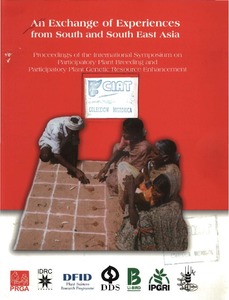Towards a practical participatory plant-breeding strategy in predominantly self-pollinated crops
There is a limit to the capacity of any breeding program, and the more crosses that are made, the, smaller
The size of each cross. The theory of the optimum number of crosses in inbreeding crops is bristly Reviewed. The theory is unsatisfactory in determining the optimum number of crosses, but models that Take linkage into account show that very large populations are needed to recover specified genotypes. Hence, one possible strategy is to select a small number of crosses that are considered favorable and Produce large populations from them. This strategy is ideality suited lo Ihe particular constrains and advantages of participatory plant breeding (PPB). When a breeding program is based on few crosses. The
Choice of parents is crucial; and farmer participatory methods are highly effective in narrowing the choice, Modified bulk-population breeding methods are desirable strategies in the participatory plant breeding of self-pollinating crops when combined with low-cross-number. Approach, and a participatory breeding program for rice in Nepal is described.

